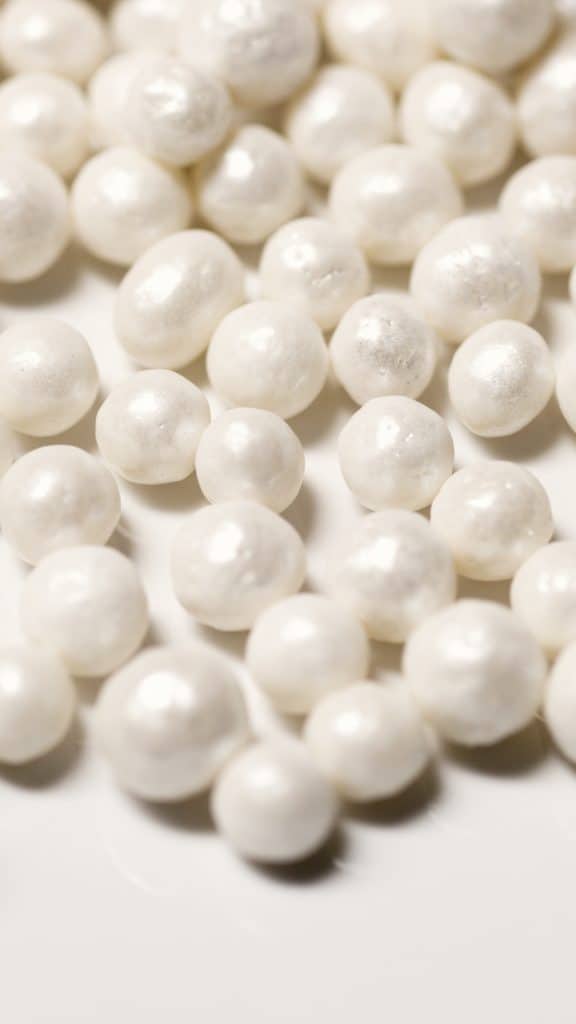
The start of the widespread use of pearl treatments coincides with the dawning of the cultured pearl age at the start of the 20th century. Up until this time, treatments had been confined to polishing or peeling the surface of natural pearls to improve lustre. However, as cultured pearls became increasingly popular and acceptable to the buying public, the use of treatments increased.
Today pearl treatments can be broken up into two broad categories: the first are those which seek to improve lustre and the second are those which whiten or change a pearl’s colour. As is the case with other gems, pearl treatments are usually used to enhance the appearance and marketability of poorer quality material.
The majority of pearl treatments are considered acceptable provided that they are disclosed to the buyer.
Lustre plus
Being composed largely of calcium carbonate, pearls have a fair degree of porosity which makes them susceptible to damage from perfume or make-up – and makes them relatively easy to bleach or dye.
The most widespread treatments are probably those that improve pearl lustre. Methods include polishing the pearl surface with a buffing wheel and polishing agent (such as Dialux) or by putting pearls in a tumbler with a polishing medium (such as bamboo pieces and also possibly a mildly abrasive powder).
The mild buffing or polishing is the only pearl treatment which doesn’t require disclosure under CIBJO guidelines. Other treatments to improve pearl lustre include coating with oils or wax, both of which are unacceptable as they cannot only damage the pearl they are also normally only effective for the short-term.
Colour
Arguably the most desired pearl colour is white with a rose tint. To produce this, many Akoya cultured pearls (both from China and Japan) are bleached in a weak solution of hydrogen peroxide under controlled heat and light conditions. This treatment may then be followed by another process to give the pearl a rose tint.
Silver nitrate is often used to produce a black or grey colour in the saltwater Akoya and freshwater pearl markets while a heat and/or dye treatment is often used to produce a deep yellow or ‘golden’ colour in Akoya and South Sea pearls.
In addition to dyes, irradiation may be used to alter colour or improve the orient (rainbow effect)in pearls .
A recent development in pearl treatment is the use of bleach to lighten natural black pearls to a brown or ‘chocolate’ colour.
Identifying treatments
The identification of bleaching or dyeing can be picked up with practice, particularly when the colour of the pearl does not correlate with what we know about natural cultured pearls. Knowledge about different pearl varieties also helps. For instance, if you are presented with a black pearl under 8mm you can probably assume it’s dyed as pearls most commonly found in this size range (Akoya and freshwater) don’t naturally produce
black pearls.
Gemmological methods to identify treatments include the use of spectroscopy and/or UV light. Fluorescence under Long Wave UV is often considered an accurate indicator of treatment, yet this isn’t always ‘foolproof’ as some natural coloured pearls may fluoresce (such as those from Mexico and South America) and some treated pearls may not.
As numerous variations of treatment methods and different combinations of such methods can be used in pearl treatment there are few ‘hard and fast’ rules when it comes to gemmological identification. This means that sometimes a number of identification methods, along with gemmological observation, may have to be used.
Certainly as pearl treatment methods become increasingly sophisticated so too will the challenges in correct identification.
For more information visit the Gemmological Association of Australia’s website: www.gem.org.au